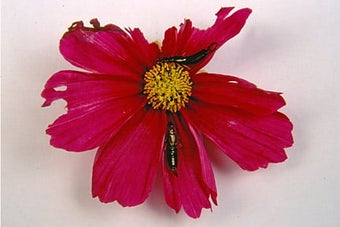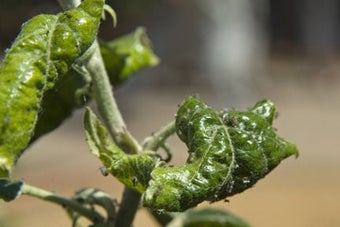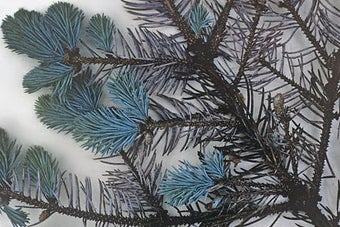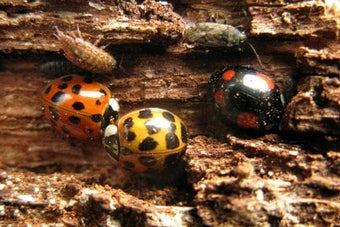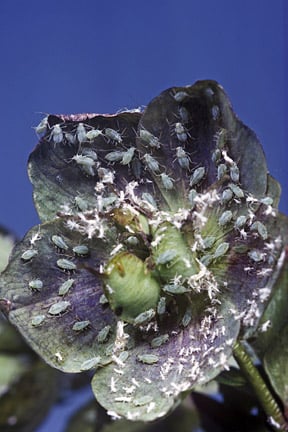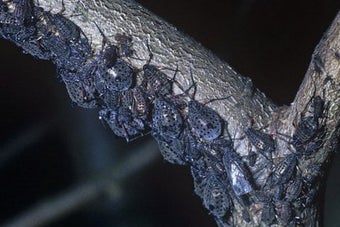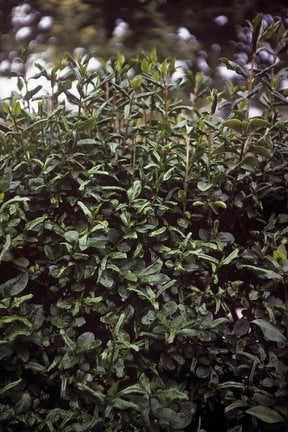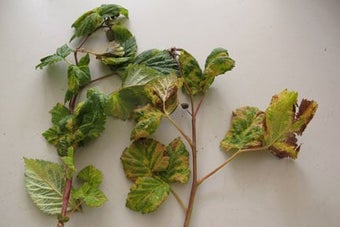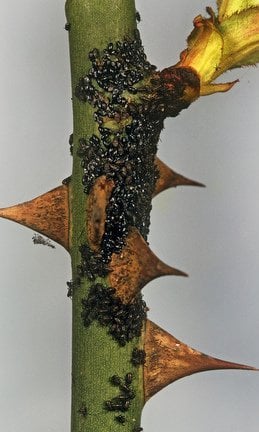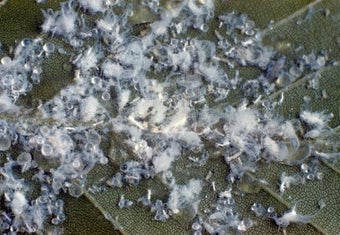
Quick facts
Predatory insects found in gardens can keep aphid numbers in check
Aphid predators include ladybirds, parasitoid wasps, lacewing larvae, predatory bugs and hoverfly larvae
Biological controls for aphids on greenhouse plants can be purchased
What are the main aphid predators?
Aphids are the food of a wide range of other invertebrates and some vertebrates. Whilst early in the season aphid numbers can build up by early to mid-summer aphid predators often wipe out colonies. Tolerating the presence of some aphids and avoiding the use of can help encourage these predators in gardens. Aphids are the basis of many food chains and part of a healthy garden ecosystem.
Ladybirds
There are more than 50 species of ladybird in the UK. They range in size from less than 1 mm to over 10 mm. They come in a variety of colours including yellow with black spots, brown with cream spots, red with black spots and black with red spots. The number of spots can vary from none to more than 24 and some species are very variable in colour and spot number.
Ladybird larvae are up to 12 mm long and usually greyish-black with variable amounts of orange-red or white markings. Some species have spiny bodies. A majority are predatory on aphids and other insects but some species feed on mildews and a few species on plants. The two-spot ladybird is available from some suppliers of biological controls. Read more about ladybirds.
Hoverfly larvae
Hoverfly larvae are legless maggots with flattened, relatively broad bodies up to 12 mm long. They often have semi-transparent bodies so internal structures, such as the gut, can be seen. There are more than 260 hoverfly species in Britain and just under half of them have larvae that feed on aphids. The green larvae of one species, Sphaerophoria rueppelli is available from some suppliers of biological controls. Adult hoverflies feed on nectar, honeydew and pollen and are pollinating insects. Adult hoverflies can be encouraged by providing lots of flowering plants. Read more about hoverflies.
Lacewing larvae
Lacewing larvae eat aphids and other small insects, which they seize with their curved jaws. They are up to 8 mm long with tapered rear ends. Some lacewing larvae camouflage themselves by placing sucked-out aphid skins among the bristles on their upper surface. Adult lacewings have a similar diet to adult hoverflies. Lacewing larvae are available from some suppliers of biological controls.
Predatory midge larvae
Predatory midge larvae, Aphidoletes aphidimyza, are yellowish orange maggots up to 3 mm long when fully grown. They insert their mouthparts into the aphid’s body and suck out the contents. When fully fed they go into the soil to pupate and emerge as tiny flies, which feed on honeydew. This midge is available from some suppliers of biological controls.
Parasitic (Parasitoid) wasps (various species)
These insects are more accurately termed parasitoids as they kill the host, something parasites do not usually do. The adults of several species of small parasitoid wasp lay single eggs inside aphids. These species include those in the genera Aphidius, Praon, Aphelinus, Lysiphlebus and Diaeretiella. The egg hatches into a grub that feeds within the host insect’s body. Eventually the parasitoid grub kills the aphid, usually by consuming the body contents and pupates inside the aphid’s body. By then the parasitised aphid’s body has become whitish brown and has a characteristic inflated appearance and is often called an aphid mummy. The adult parasitoid emerges through a hole cut in the aphid’s body. Some parasitoid wasps are available from suppliers of biological controls.
Earwigs
Earwigs are omnivorous, feeding on small invertebrates and plant material. On fruit trees they can give useful control of fruit aphids and do not cause damage to the trees or fruit. Providing shelters such as flower pots loosely stuffed with hay in trees can help increase numbers.
Predatory beetles
Some ground and rove beetles climb plants to feed on aphids, the rove beetle Atheta coriaria is available from some biological control suppliers for control of aphids and some other glasshouse pests.
Birds
Birds including blue tits will feed on aphids. There is some evidence that in gardens where birds are encouraged aphid numbers are lower.

Biological control
Some aphid predators, including predatory midges, parasitoid wasps, lacewing larvae, rove beetles, hoverfly larvae and ladybirds, can be bought by mail order or some garden centres as biological controls. Biological controls are the use of natural enemies to control unwanted organisms. This can be done by introducing various predatory or parasitic insects or mites, or nematodes that infect the animal with a fatal bacterial disease. This technique is mainly used in greenhouses, but some biological controls can be used out of doors.












